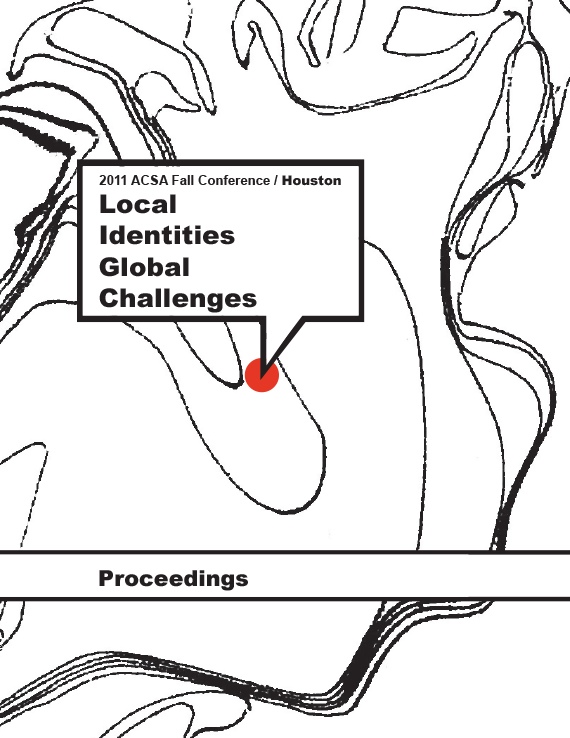Author(s): Eric Olsen
At a moment when architectural educators and practitioners are questioning the efficiency of consolidated infrastructural systems–such as electricity, water, and information systems–as the dominant connectors between people and the public resources they consume this paper argues that studying alternative building infrastructures and technologies exemplified in developing countries of the “Global South” will present design strategies that proffer forward thinking approaches to private-public interface that leapfrog over the dominant legacies of modernism’s “nostalgia for the future.” While “modernist nostalgia” partially dwells in the utopia of standardization, technological leapfrogging allows design research to skip generations of innovation—due to lack of resources or interest—and actually hurtle design research forward into a radical future liberated from the genealogy of earlier, moribund intelligences. As such, most of architecture’s performative technologies that have been developed over the past century relied upon applying a common standard to the perfunctory systems and elements that privileged design as mass consumption. Thus, the wall outlet, mechanical chase, and unitized block exemplify this research into the production of idealized efficiency. To argue the parallel transformative potential between the industrial revolution’s Fordist ethic vis-à-vis transforming building technologies within our current revolution in information and energy is almost taken for granted under the hegemony of scripting buildings and sustaining the planet. Turning to the lessons deployed in the Global South, however, provides alternative examples in which the global force of advancing technology means greater access to and diffusion of technology where the effects are multivalent, pluralistic, and based in a real versus idealized social consciousness. For example, notions of self help architecture like N. John Habraken’s support/infill housing proposal (Supports, an Alternative to Mass Housing. The Architectural Press, 1962) are radically reconceived to account for micro-infrastructural elements such as the photovoltaic cell, point-of-use water disinfection, and wireless communication. The built environment of the Global South, less burdened by a Modern legacy, thus offers compelling advances in building technology that do not necessarily retrofit existing systems but, rather, leapfrog them. Within this paradigm of technological leapfrogging lies the potential for a South to North exchange of architectural ideals that operates in reverse of the modernist mission.
Volume Editors
Ikhlas Sabouni & Jorge Vanegas

 Study Architecture
Study Architecture  ProPEL
ProPEL 
